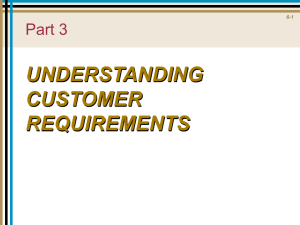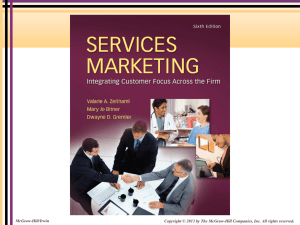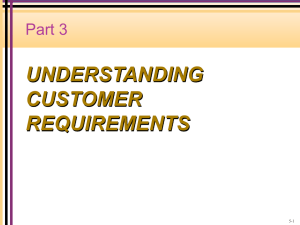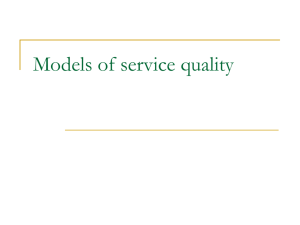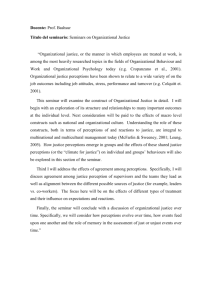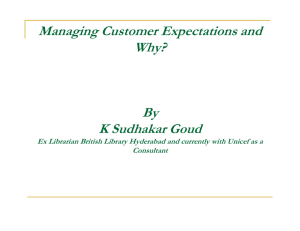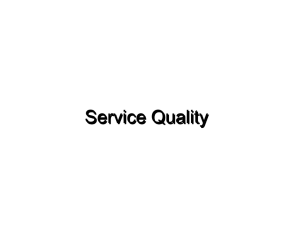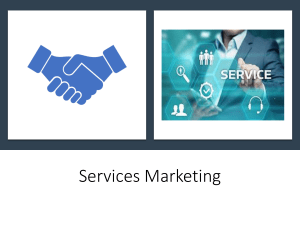Listening to Customers
advertisement
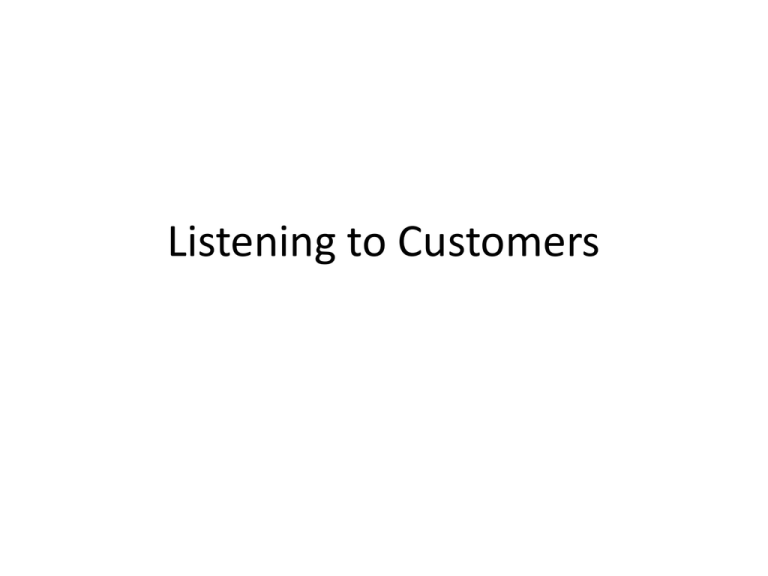
Listening to Customers Provider Gap 1 CUSTOMER COMPANY Expected Service Listening Gap Company Perceptions of Consumer Expectations Part 3 Opener Common Research Objectives for Services • To discover customer requirements or expectations for service. • To monitor and track service performance. • To assess overall company performance compared with that of competition. • To assess gaps between customer expectations and perceptions. • To identify dissatisfied customers, so that service recovery can be attempted. • To gauge effectiveness of changes in service delivery. • To appraise the service performance of individuals and teams for evaluation, recognition, and rewards. • To determine customer expectations for a new service. • To monitor changing customer expectations in an industry. • To forecast future expectations of customers. Criteria for an Effective Service Research Program • Includes both qualitative and quantitative research • Includes both expectations and perceptions of customers • Balances the cost of the research and the value of the information • Includes statistical validity when necessary • Measures priorities or importance of attributes • Occurs with appropriate frequency • Includes measures of loyalty, behavioral intentions, or actual behavior Stages in the Research Process • Stage 1 : Define Problem • Stage 2 : Develop Measurement Strategy • Stage 3 : Implement Research Program • Stage 4 : Collect and Tabulate Data • Stage 5 : Interpret and Analyze Findings • Stage 6 : Report Findings Portfolio of Services Research Research Objective Identify dissatisfied customers to attempt recovery; identify most common categories of service failure for remedial action Assess company’s service performance compared to competitors; identify service-improvement priorities; track service improvement over time Obtain customer feedback while service experience is fresh; act on feedback quickly if negative patterns develop Use as input for quantitative surveys; provide a forum for customers to suggest service-improvement ideas Measure individual employee service behaviors for use in coaching, training, performance evaluation, recognition and rewards; identify systemic strengths and weaknesses in service Type of Research Customer Complaint Solicitation “Relationship” Surveys Post-Transaction Surveys Customer Focus Groups “Mystery Shopping” of Providers Service Employee Surveys Measure internal service quality; identify employee-perceived obstacles to improve service; track employee morale and attitudes Determine the reasons why customers defect Lost Customer Research Forecast future expectations of customers; develop and test new service ideas Future Expectations Research Service Quality Perceptions Relative to Zones of Tolerance 9 8 7 6 O O O O O 5 4 3 2 1 0 Reliability Retail Chain Responsiveness Assurance Empathy = Zone of Tolerance Tangibles O = Service Quality Perception Service Quality Perceptions Relative to Zones of Tolerance 10 8 O O O O O 6 4 2 0 Reliability Responsiveness Computer Manufacturer Assurance Empathy = Zone of Tolerance Tangibles = S.Q. Perception O Importance/Performance Matrix HIGH High Leverage Importance Attributes to Improve Attributes to Maintain Low Leverage Attributes to Maintain LOW Low Leverage Attributes to De-emphasize Performance HIGH
